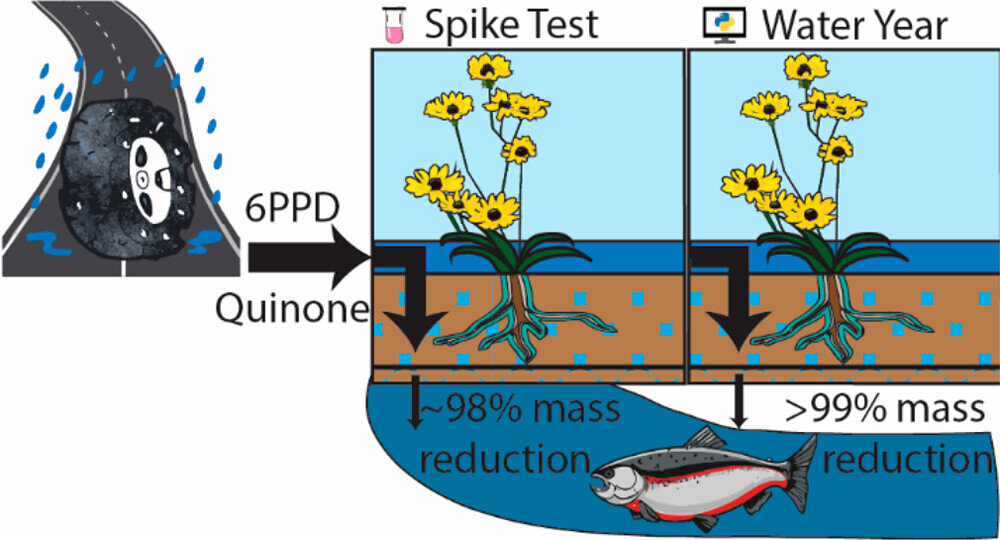A new study has revealed that specially designed gardens could significantly reduce the amount of a toxic chemical associated with tires entering our waterways. The research shows that these “rain gardens” have the potential to reduce the amount of the toxic chemical by over 90%.
The chemical, 6PPD-quinone, forms when car tires interact with the atmosphere. It enters rivers and streams through runoff from roads, posing a threat to coho salmon, rainbow trout, and other fish species.
Rain gardens, also known as bioretention cells, are gardens specifically engineered to reduce flooding and absorb contaminants from road runoff. When road runoff is directed onto these gardens, they capture and retain a large percentage of the toxic chemical.
Researchers from the University of British Columbia conducted a study in collaboration with the City of Vancouver. They tested a rain garden located at 8th and Pine by pumping 14,000 liters of water spiked with 6PPD-quinone onto the garden for four hours. The researchers found that only about two to five percent of the chemical made it through, with approximately 75 percent being captured by the soil and plants.
Using computer models, the researchers estimated that in an average year, the rain garden could prevent over 90 percent of the toxic chemical from directly entering salmon-bearing streams.
The findings of this study could have significant implications for Vancouver’s Rain City Strategy, which aims to build more “green infrastructure” including rain gardens. Municipalities can use this research to plan the placement of rain gardens, particularly in areas with large highways that runoff into salmon-bearing streams. Implementing these systems would not only protect fish populations but also help achieve multiple environmental goals.
The study, published in the journal Environmental Science & Technology Letters, provides valuable insights into the potential of rain gardens to mitigate the impact of toxic tire chemicals on aquatic ecosystems.
More information:
Timothy F. M. Rodgers et al, Bioretention Cells Provide a 10-Fold Reduction in 6PPD-Quinone Mass Loadings to Receiving Waters: Evidence from a Field Experiment and Modeling, Environmental Science & Technology Letters (2023). DOI: 10.1021/acs.estlett.3c00203
Provided by University of British Columbia
Source: https://phys.org/news/2023-06-gardens-salmon-toxic-chemicals.html
Denial of responsibility! TechCodex is an automatic aggregator of the all world’s media. In each content, the hyperlink to the primary source is specified. All trademarks belong to their rightful owners, and all materials to their authors. For any complaint, please reach us at – [email protected]. We will take necessary action within 24 hours.

Jessica Irvine is a tech enthusiast specializing in gadgets. From smart home devices to cutting-edge electronics, Jessica explores the world of consumer tech, offering readers comprehensive reviews, hands-on experiences, and expert insights into the coolest and most innovative gadgets on the market.


